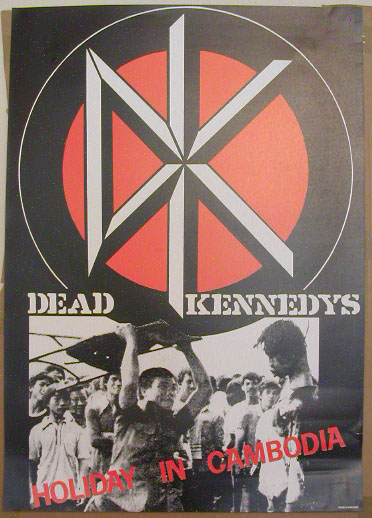The term “punk” has many different meanings associated with it. There are some common aspects of punk and punk art, however there are many subdivisions, each with their own agendas which spans roughly from the 1970's to today. Punk is inspired by a variety of non-literary aesthetic forms that became popular in the late 1960s and throughout the 1970s, such as punk rock music, hardcore pornography and exploitation films, and graphically violent/sexual visual art (such as R. Crumb's work in Zap Comix).
In 1975 punk first emerged from New York's Greenwich village and surfaced at the small bar in the Bowery called CBGB's. Many bands, such as the Talking Heads, the Ramones and Blondie, emerged who were disillusioned with mainstream music, each with their own unique sound, although there was a clear united theme of rebellion and subversion.
In New York, punk rock might have signified a rebirth of rock and roll, but in London an entire culture was conceived. Here the social climate was one of poverty and frustration. Unemployment soared to record levels while the economy plummeted into the deepest depression since World War II fueling the uneasiness of the younger generation. In addition to economic despair, increasing division between the upper and lower class people outraged many sparking violence throughout the country.
Punk rock offered an escape from the hopeless conditions of late 1970's London, while simultaneously empowering the thousands of young people who had been marginalized by a culture in turmoil. The art that emerged was usually in the form of album art, posters, and graffiti that confronted a range of social issues, like racism, oppression, and class conflict while other art promoted empty rebellion and nihilistic views.
Punk rock is also known for an affiliation with radical, neo-Marxist politics. The Dead Kennedys, along with lead singer Jello Biafra's label Alternative Tentacles, gave rise to a cultural fascination with "DiY" (Do-it-Yourself) art production. DiY 'zine literature was an outlet for young people to share and communicate their subversive art and frustrations with society. Bands like The Dead Kennedys preached anti-capitalism by trying to call attention to the ugliness of a commodified culture, and the beauty of authentically marginal taste preferences. They did this not only through their song lyrics, but by the artwork and themes of their albums and reflected especially in their posters and small underground 'zines.
One band definitely worth mentioning is CRASS. Besides being a collection of great music Crass Records Label produced albums that were characterized by DiY artwork, photocopied sleeves which doubled as anarchist propaganda, and a unique cataloging system which involved a countdown to 1984, a year of symbolic significance because of its Orwellian origins. Their cover art which was a highly collaborative endevour included paintings, slogans and collage. (See directly below.)


Its hard to concisely explain punk art because there is such a range of bands and things that were happening throughout these decades. Punk art was largely produced by the use of copying machines which allowed for cheap mass production of gig posters and 'zines. Techniques such as photomontage, collage, and hand type were used to create these very ephemeral pieces of work.



















